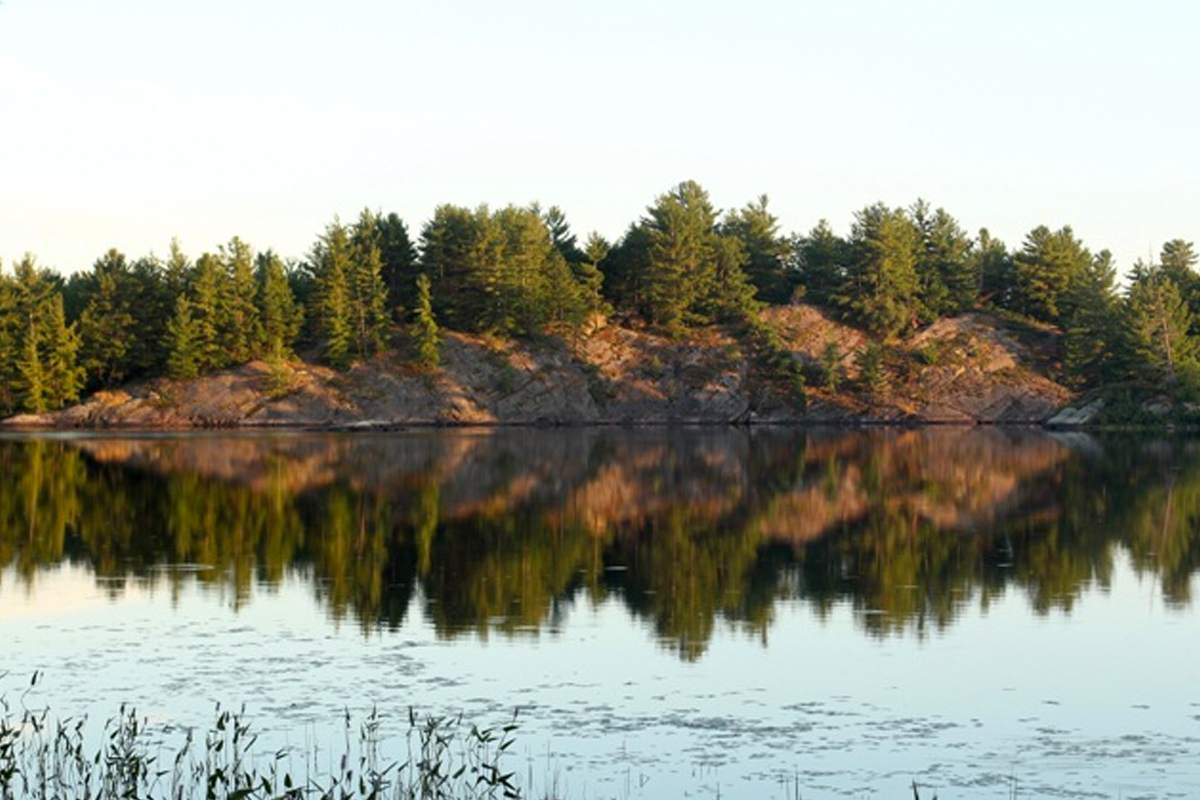
Have you ever noticed what happens to the landscape about a half-hour’s drive north of Peterborough, as you pass Buckhorn or Burleigh?
The stratified limestone that supports the Saint Lawrence Lowlands appears alongside granite outcrops that characterize the great Canadian Shield and the tree, plant and species distribution adjust accordingly in this unique and biodiverse zone known as The Land Between. For our family and the visitors who come with us, summertime means exploring this zone by canoe through its myriad paddling routes, and we’re so fortunate to have the Kawartha Highlands Provincial Park in our backyard. We’ve been fortunate enough to spot deer, moose and porcupines, swim with adorable painted turtles, skip along rock barrens and cliff faces with the endemic five-lined skink and snap shots of beavers building the lodges and dams that are constantly changing the waterscape of the park. Along the way, paddlers are treated to the splendour of The Land Between: rocky cliffs, white pines, fishing loons and big birds of prey viewed best from the seat of a canoe or kayak on any of the lakes, rivers or creeks in this large tract of the land of shining waters.
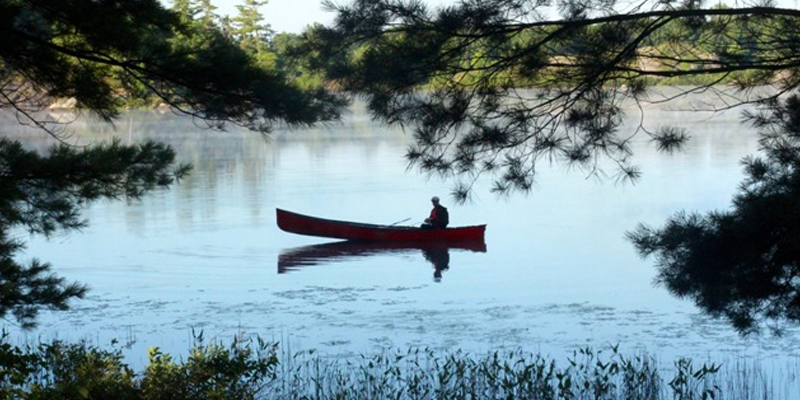
Sunrise solo paddle on Shark Lake
Visitors from the south have several access points to choose from when planning excursions through this semi-wild area that preserves the precious habitat of The Land Between.
If you’re a seasoned tripper bringing your own canoe or kayak, or have already rented boats and gear from Adventure Outfitters in Lakefield or Wild Rock, then you’re free to choose from any number of jumping off points. Lately, I’ve been exploring “the southern ponds” – Little Turtle, Adams and Sawmill Lakes – in the southeast corner of the park, accessible by Coon Lake Rd. The string of lakes are characterized by intense beaver activity and make for some fascinating wildlife and bird viewing. If you’re just out for a day paddle, these three lakes offer a sense of remoteness and variety, along with some interesting hiking opportunities after a shore lunch.
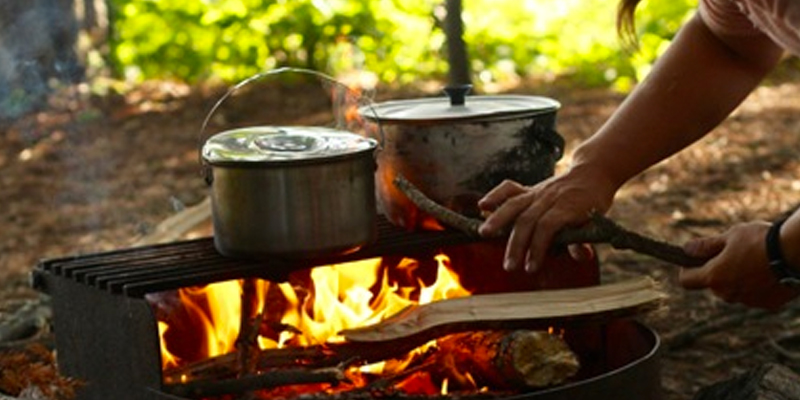
Backcountry cuisine on Shark Lake
For an overnight, take the portage from Sawmill to Shark and find a spot on this unique granite headland lake with echoes of Georgian Bay.
From here, it’s possible to continue north through the vertically-aligned Vixen and Buzzard lakes and into Long Lake, for a really comprehensive tour of the lower eastern park, but of course this option requires a vehicle shuttle between Coon and Long Lake access points.
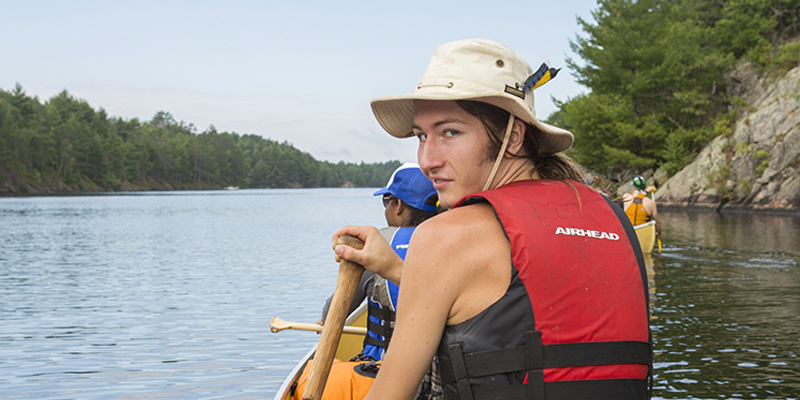
Paddler’s Paradise
If you’re not comfortable transporting a canoe on your vehicle, no worries: even if you don’t have your own boats, you can still outfit your crew by renting a Paluski Canoe or a Scott Kevlar boat from the outfitters at Long Lake Lodge right at the put in site at the end of Long Lake Drive in the central area of the east park.
The put in is a sandy beach that provides an immediate taste of the park’s beauty, and before you know it, you’re navigating the narrow straits of the aptly-named Long Lake. Plenty of opportunities for cliff jumping exist along its shores, but make sure to scout the landing first and bring a camera to provide evidence of your daring jump!
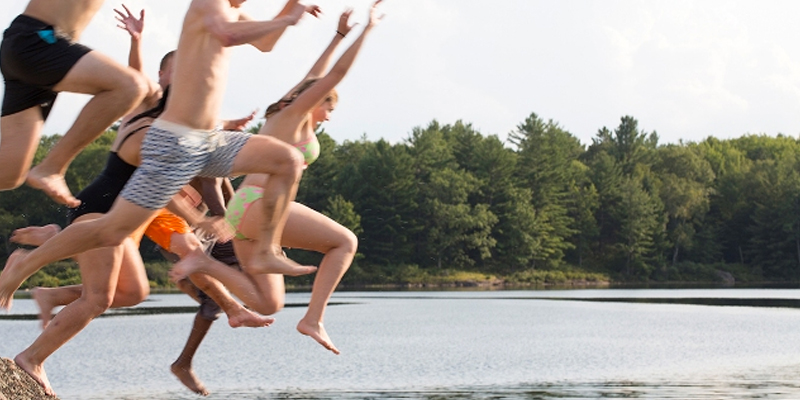
Island cliff jumping on Turtle Lake
Long Lake sports multiple paddle-in sites, but it’s also a gateway to an array of lakes in the park’s interior.
One of my favourites is Cox Lake, which is full of island and isthmus campsites and offers great swimming and fishing. Furthermore, it contains several secluded bays which make for excellent wildlife viewing at dusk and dawn; indeed we’ve seen herons, turtles, beavers and even moose all along the shore of this quiet lake.
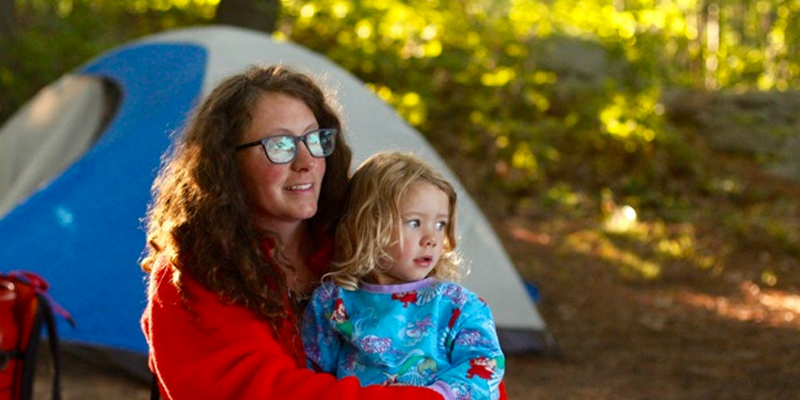
Backcountry family: Briagh & Lily
Needless to say, there’s plenty of beauty and adventure to be had here and the logistics of the park make it very easy to plan and execute a trip as well.
I always choose the perfect spots online with Ontario Parks reservation site, although I’ve never had much competition. We take groups of paddlers into the backcountry, so we usually need multiple tents, and the sites I’ve seen are spacious enough to include a few tent pads, as well as a safe place to have a fire, cook your meals and hang a bearbag. Also, as far as park infrastructure goes, portages are well-marked and maintained, the sites are well set up, with clear signage, at least one camp table and a “thunder box”, usually off in a semi-private location! All told, the park makes for an ideal setting for trips with the Land, since it’s so close to Peterborough, and other points in Southern Ontario, yet wild and beautiful enough to provide an authentic Canadian backcountry experience.
